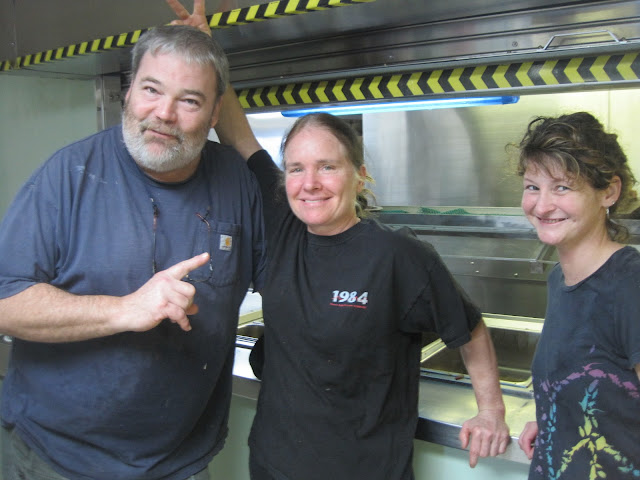2 weeks on a ship!
What does life look like and feel like if you live on a research vessel for two weeks?
 |
| R/V Thomas G. Thompson |
The first question came into my mind was water... There were drinking fountains everywhere and water was not an issue. How do you maintain drinking water supplies on this ship? Interestingly, all the water used for drinking, cooking, laundry, cleaning, sanitation etc. all is originally ocean water, which is produced by the reverse osmosis system. So we had a good quality of water on board for all purposes.
There are air conditioners and ventilators working 24 hours on the ship, so there is a constant sound of air conditioners in the background all the time. During the dives, the R/V needs to hold its position. For that, the ship uses two bow thrusters and two main drive systems to keep the position. There is always the ambient sound of machinery in the background.
Cruising when it is rough might be tough, it may cause nausea. If it is light, just in case, I recommend a non-chemical treatment. It is the sea-bands which applies pressure on the certain accupressure points on each wrist. This accupressure point is called Nei-Kuan! Thanks to Stephen Farrington, I just learned about it on this trip:)
 |
| Sea-bands work |
There is something very special for the R/V Thomas G. Thompson! The food is super-ultra-mega amazingly delicious!! Everybody is talking about how they will miss the food on the ship. The Chief Steward Sarah Wicker worked as a Chief for 30 years in many different places in the US and Canada. Actually, Sarah and her husband Grey lived on a sailboat for 26 years cruising world-wide on the Pacific and Atlantic Ocean. They have two daughters and they were home-schooled, sorry, boat-schooled until high school. Now, their daughters are two happy, beautiful and successful women. Sarah, Grey and the second cook India are wonderful people!
 |
| Grey, Sarah, and India blessed us with the food they prepared |
Another thing on board which is taken for granted is, there is no day off on boat, so it is hard to keep track which day it is, even what time it is, since in NEPTUNE Canada there are people working shifts 24 hours a day. Even early morning, for instance around 5am, can be as lively as during the day.
The boat is like your home, it really is like your own big house, since your stuff stays wherever you put them and you don't worry about locking things, your cabin doors. This big house has one garden that you cannot go in, but just look at. It is a unique garden which changes its shape and colors instantly in harmony with sky.
I really enjoyed having the Pacific Ocean as my garden during these two weeks.
Life is great on board!!
Goksenin Sen
Marine Educator


